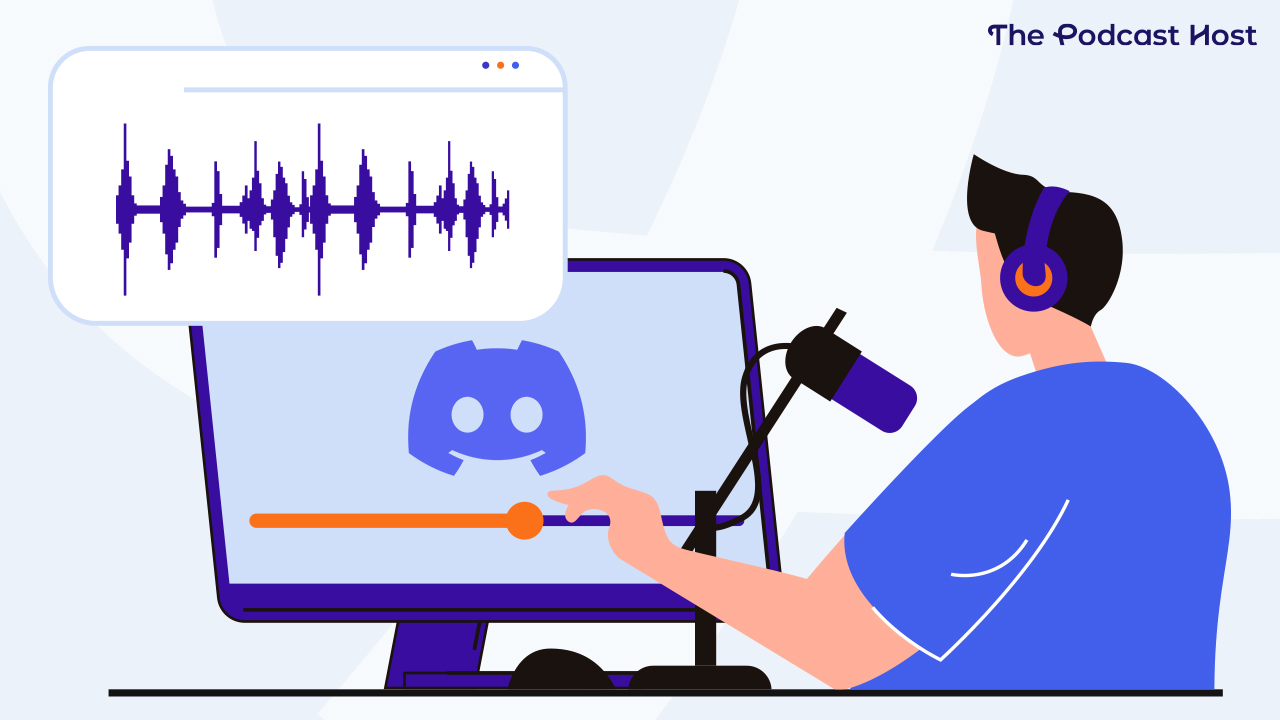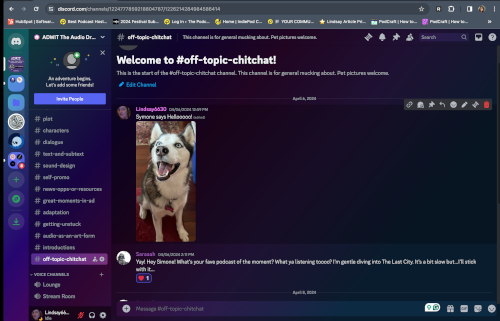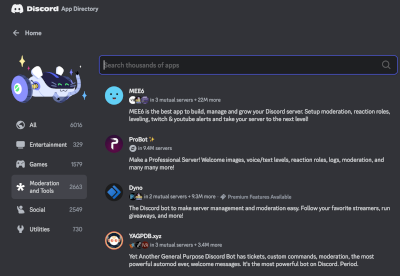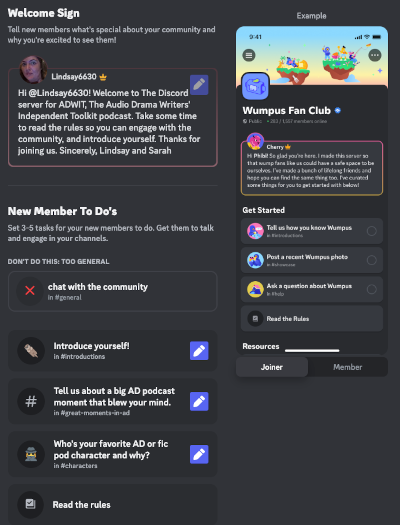Discord for Podcasters: Engagement Without Exasperation

If you can show me a social media platform without ads, fights, and algorithms, I’ve got a bridge in Brooklyn to sell you. However, Discord is unlike other types of social media. Discord can help you keep in touch with other podcasters, nurture a community of followers, and help you improve your podcast. In the next few paragraphs, I’ll show you ways to make it work for you and your podcast.
What is Discord?
Discord is a communication platform that includes text, VoIP, video calls, shared games, and media or file sharing. If you remember Internet Relay Chat in the 1990s or have used Slack, you’ve used something similar to Discord.
The channels are nested topics within a server or a group dedicated to a topic and membership. For example, a Discord server about fly fishing might have channels named bait, fishing_spots, or fly_tying.
Discord started as a way for gamers to connect efficiently. So, you may see a lot of Discord servers dedicated to games and gaming. You’ll notice that much of Discord’s branding involves bright colors and cartoon characters.
Despite the bright and bouncy branding, Discord is a good place for serious discussion because most servers require an invitation to join. Two-factor authentication and a dedication to privacy make this platform much calmer than it would seem. It’s meant to nurture community among people with specific interests or shared values.
Just like walking into a party where you only know the host, you need to know and use the etiquette. The best way to have a good Discord experience is to follow the rules and, as they say, read the room.
Discord and Content Moderation
Users vastly outnumber the employees on any Internet platform, making content moderation challenging. Just as there are Discord servers for Goth embroidery artists, bread bakers, or LoFi Girl fans, extremist groups and abusive individuals have servers, too. However, Discord’s Trust and safety team is on the case. Again, servers are invite-only, so you may never see this activity. There isn’t a scrolling feed with posts by any and all users. You only see conversations in the channels you select. John Wayne Gacy lived in a house, but that doesn’t necessarily mean houses are bad. Clowns, maybe, but not houses.
Discord’s website has links to its Support department and Safety library at the top of its main landing page, so the resources to make your experience worthwhile are there.
How to Use Discord for Podcast Networking and Education
Whether you have a Discord invite link or not, the interface will ask if you want to download the app. You can use Discord in a web browser, but to get the most out of your experience, download Discord’s app for desktop computers or mobile devices.
Discord’s user interface represents servers by icons running down the left of the screen. At the top left, the Discord icon leads to direct messages. At the bottom of the list are a compass icon and a plus (+) icon.

If you click on the compass, you can explore “discoverable” (open) servers, and then search for communities to join.
You’ll notice that Discord has a lot of bots and apps. On Discord, bots aren’t necessarily bad. They handle automated tasks (such as comparing IP addresses of new members) to prevent future targeted attacks.
Joining Existing Podcast Communities in Discord
Getting into most Discord servers is like getting into a book club. You’d have to search for resources for people who enjoy reading books, then find out if they can recommend a good book club. Like podcasting, Discord communities are niche. So, they tend to be tight-knit groups of people who passionately defend a set of opinions.
Read the server’s rules, and follow any instructions. As I’ll show you later, Discord uses questions to help people find the most relevant channels.
In terms of etiquette, take some time to read posts and get a sense of what the community is like before you start posting. Discord’s blog has 9 Tips for Hanging Out on Discord, which can help you customize your user interface. Users simply have text and emoji to express themselves, so it’s easy to seem callous if you don’t choose your words wisely.
How to Build Your Podcast Community on Discord
Again, Discord’s website has a vast knowledge database, including a Beginner’s Guide, with leads on using text and voice channels and setting up your own server.
You start by clicking that big green plus sign above the compass.
You can use a template or wing it. Discord asks if this server is for you and your friends or if you’re creating a community. Enabling your server as a community has more rules and guidance. This keeps your community from being overrun by trolls. You also want to check Discord’s app directory to find bots to handle moderation tasks for you.

Discord Server Channels
Decide on your server priorities and set up channels. As I said earlier, a fly fishing podcast’s Discord server might have discussion channels about bait, fishing spots, or fly tying. You might want to have channels about specific episode discussion or upcoming events. An off-topic or general channel lets people share news or ideas you may not have considered. Giving your followers a place to share freely helps you build a better relationship with them.
Discord’s Security and Onboarding
Go through your server’s settings and set up security and onboarding. The Safety Setup steps help with 2FA authentication and preventing spam. You can even set your Discord server up to block certain words, whatever you choose.
Setting up onboarding helps make your followers feel welcome. It also reminds potential bad actors that there are people here.
This means that when someone joins your server, the user interface will automatically welcome them, ask questions you create, and guide them through visiting channels to contribute.

Once your server is set up, share an invite link with the people you want to join your server. An invitation link can be temporary or never expire. It’s up to you which you want to choose. Temporary links prevent trolls from using that link long after you’ve been paying attention to it; permanent links leave the door open for anyone to join.
Don’t be afraid to turn this car around. If the effort of making and maintaining a Discord server for your podcast exceeds the enjoyment, shut it down.
Discord’s Pricing
Discord is free to use, which makes it easier to get started and invite members. But you’ll notice Discord often asks if you want to buy some Nitro.
What is Nitro? Do you need it? Probably not, but it’s fun.
Nitro’s most significant benefit is Server Boosts. This means that all members of a server get perks spread throughout that community.
- Nitro Basic: For $2.99 per month, you get file sharing up to 50MB, custom emoji, app icons, Super Reactions (animated emoji), badges, and video backgrounds for when you’re on camera.
- Nitro: For $9.99 per month, you get the perks from Nitro Basic, including file sharing up to 500 MB, HD video streaming, profile upgrades, and the ability to write messages up to 4000 characters long. This tier offers two Server Boots and a discount in the Discord Shop.
Discord’s absence of ads and algorithms fuels this platform’s popularity. But apparently ads, or “sponsored quests” are coming to Discord in 2024. GameRant reports, “Discord is attempting to make advertisements a fun part of the experience, allowing users to earn rewards while completing an in-game task from the advertiser.”
I sincerely hope MowPod isn’t involved.
Can I Use Discord To Record My Podcast?
Yes and no. Discord’s blog says that you can make a podcast using their Stage feature. Stage is similar to Clubhouse. This is a good feature if you want to produce a live podcast event. Regarding recording, “Discord does not currently provide a recording feature, but there may be third-party tools that allow you to record your event.”
There is, and its name is Craig.
Craig is a bot that records audio with separate tracks for each user. Each recording can be up to six hours long and contain 512MB of raw audio. The audio file is kept for seven days, so download it as soon as you can. Craig supports the maximum bitrate and an unlimited number of speakers. It also has a cute bear cartoon logo.
Craig has their own Discord server for support, which you may want to join if you want Craig to record your podcast. Sorry, but it’s really hard to avoid anthropomorphizing a cartoon bear.
So, yes, you can use Stages to make a remote call and record it using Craig. But you and I both know that there’s a lot more to making a podcast than simply talking and recording.
What Can Discord Do for Your Podcast?
Discord is complicated, but the juice is worth the squeeze. I was surprised to find that after setting up a Discord server for my podcast, 30 members joined in three days.
Seeing 30 podcast downloads feels nice. When 30 people sign up and answer a simple question, complete with all the mis-spellings and tics of speech that make us human, that’s genuinely heartwarming. Within 24 hours, members discussed topics that gave me ideas for new episodes.
Discord might not be the sole cure for podfade, but it’s definitely an excellent treatment.
On the subject of friendly podcaster spaces to hang out online, have you joined the IndiePod Community? It’s a great place to get or give help, share tips and anectodes, and build new relationships and collaborations.
